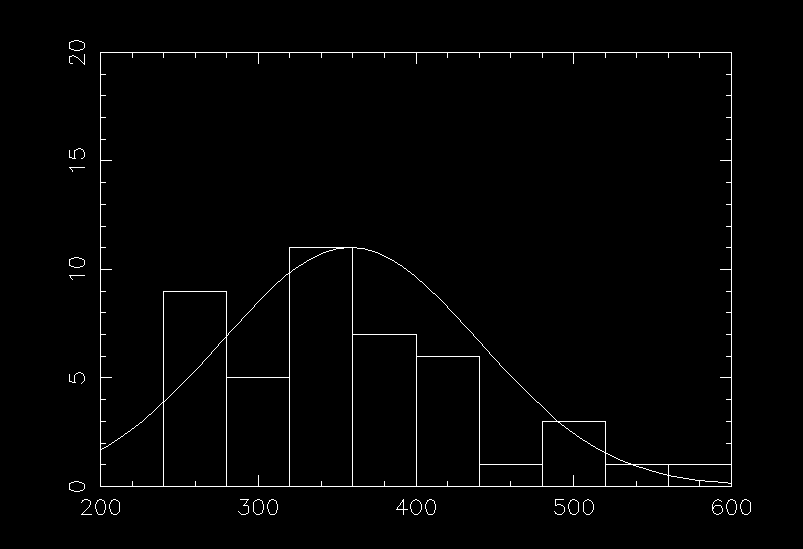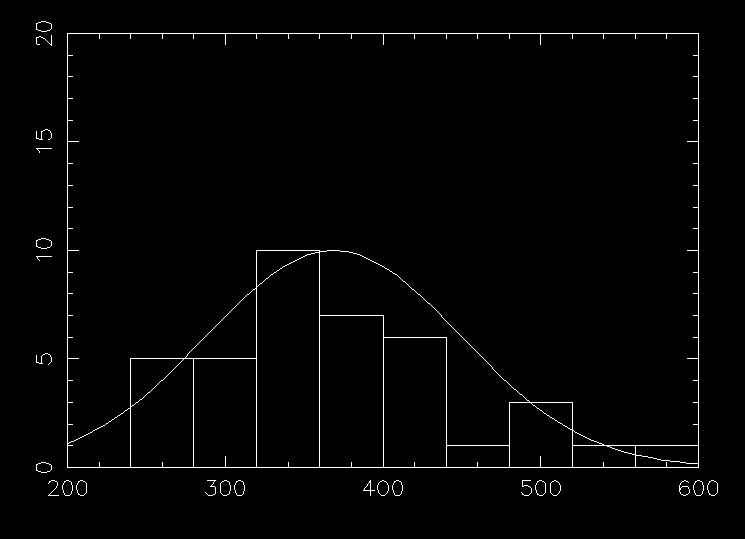The actual salmon count data shown as a histogram of the number of years where the salmon counts landed in the indicated bins. (Bins are 50,000 salmon counts wide.)
 This distribution, defined by 44 points, has a mean of 358,000 salmon with a dispersion of 82,000 salmon. The error in the mean is 12,000 (82000/(square root of 44)) Points to note about the distribution:
There has been some speculation and data that suggest there has been a decline of salmon recently in the Columbia River System. What do these data say? Here is the distribution of the data with the last 5 years subtracted out, so there are 39 years worth of data:
 This distribution, defined by 39 points, has a mean of 368,000 salmon with a dispersion of 81,000 salmon and a mean error of 13,000.
Note: The dispersion for the 39 year sample and the 44 year sample
are similar Over the last 5 years, the data are defined by an average of 278,000 salmon with a dispersion of 33,000 and a mean error of 15,000 = (33,000/(sqrt of 5)). Does this data show a significant decline of salmon? Well, we would plug our means and mean errors into the formula for the Z-test, but you can just plug the numbers into The Z-test tool. (Note: in this particular tool, you can enter the straight standard deviation and the number of data points - the tool automatically calculates the error in the mean from that.) You should find a Z-statistic of 4.6 indicating high significance. Hence, in 1996, you could have used statistics to definitively show a strong decline in the salmon population. However, this would require that the 44 year sample is an accurate reflection of the general phenomena and, as it will turn out, salmon counts/abundance are highly cyclical in nature and that 44 year snapshot of the population from one dam is not representative. (Note that it will turn out that salmon counts will start to strongly rise in the late 90's.)
|
 this indicates that we have enough data to accurately
determine the dispersion.
this indicates that we have enough data to accurately
determine the dispersion.